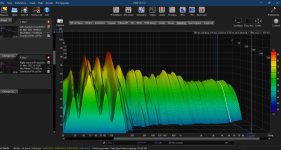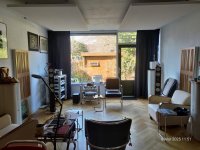- Thread Author
- #1
Last week I did some measurement using REW in my living room. It confirmed my suspicions that I have a bass problem. I already have 2 GIK soft fit bass trap with scatter plates and 4 Daad4 absorbers. I was thinking of buying 4 to 6 more GIK soft fit bass traps. I am in doubt if I should buy these with the scatter plate or with the range limiter.
But before I order anything I would like your opinion. Another option is buying 2 Psi Audio AVAA C214 but that is way more expensive.
The reason I like GIK is because they produce in German so transport costs would be relatively low. My room is about 4*7meters.



But before I order anything I would like your opinion. Another option is buying 2 Psi Audio AVAA C214 but that is way more expensive.
The reason I like GIK is because they produce in German so transport costs would be relatively low. My room is about 4*7meters.




